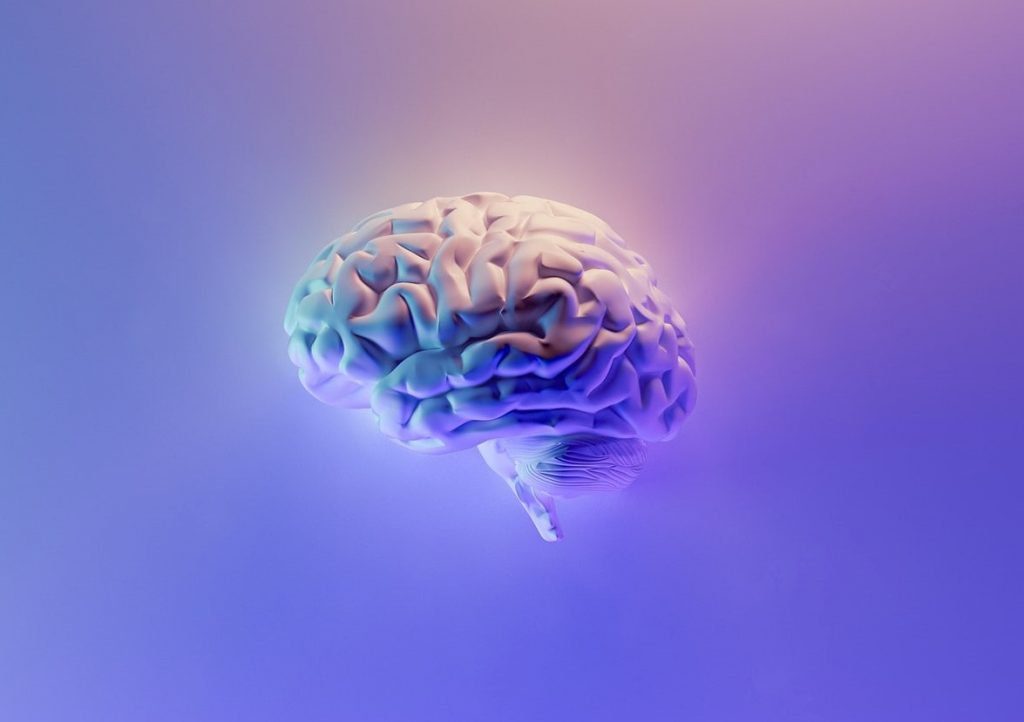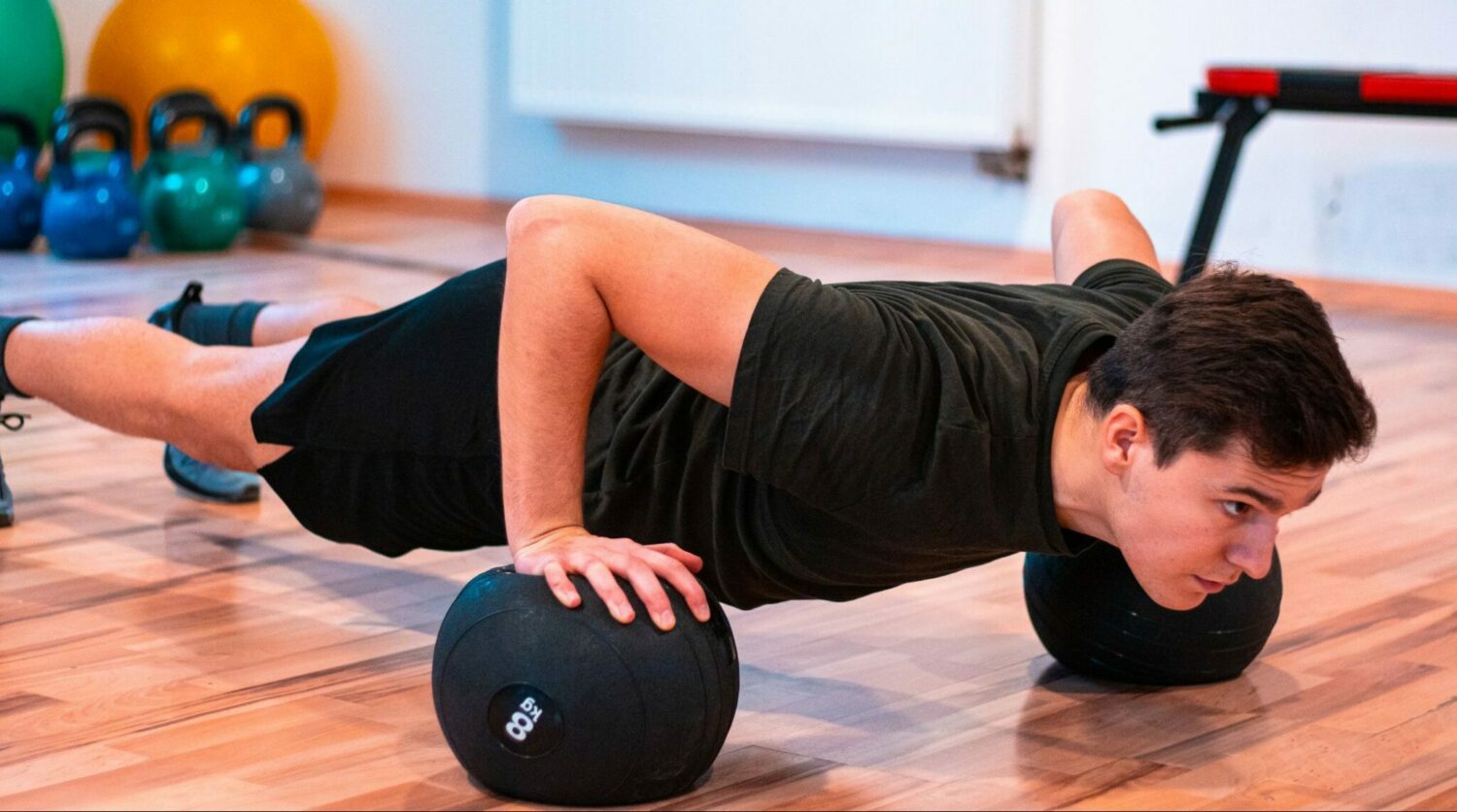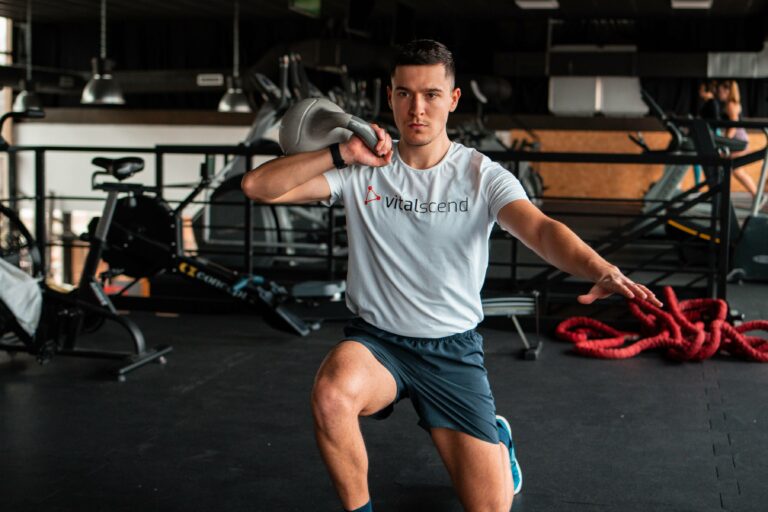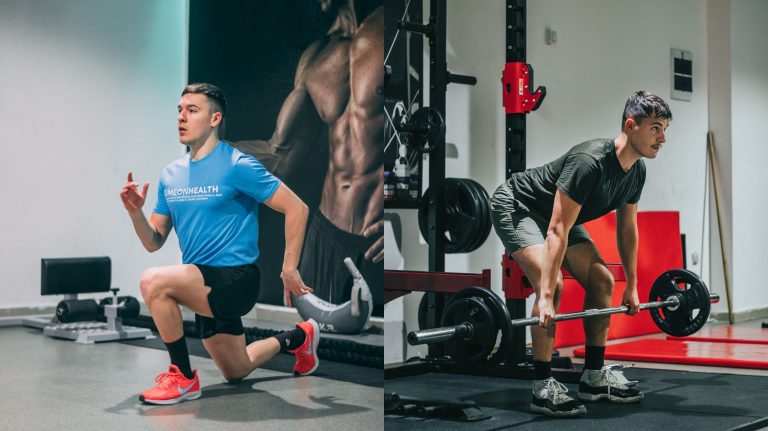7 Effects of Strength Training on the Brain: Memory, Cognition & Focus
Exercise has various positive effects on the brain. With the rise of neuroscience and physiology, experts are constantly discovering new health effects on the brain, from the exercise itself. The potential effects of strength training on the brain are endless. From neuroprotection, mood balance, and energy boost to memory and focus, exercise can help.
Physical Activity on Brain Health
Exercise benefits extend far beyond body re-composition, muscle building, and fat loss. It can assist neuroprotection, reduce oxidative stress and DNA damage and make out brain stronger and more resilient.
Physical activity is shown to not just boost brain health, but significantly improve brain performance. The basic brain functions like executive thinking, sensation, movement control, memory recall, language understanding, and awareness.
The new era brings new challenges, to which superior brains are highly favorable (in terms of evolution). Improving one’s attention span, boosting one’s mood, improving focus & concentration, both short-term and long-term memory as well as neuroplasticity are various potential benefits shown to be initiated by exercise.
Brain Evolution
- Brain Shrinkage
- Modern Limitations
- Primal Brains
- Complex Brains
As we age, our brains age too. This causes brain shrinkage and makes everything slower, harder, and less efficient. The aging brain slowly dies and with it our activity. This makes a lot of sense. Back in our monkey-days, we had to move to find food in order to survive. We were driven by Adrenalin and cortisol, by fear of the unknown. We had to provide, find shelter, hunt for food, and travel distances to find a better climate and environment.
Brain Evolution: Reptilian – Primal – Limbic – Neomammalian – Rational Brain
- Nowadays we have everything at the touch of a button. We can drive to the supermarket, we have a secure shelter with all kinds of climate adaptations. Simply said, we are very comfortable and secure. From one perspective it is a good thing, but from the other it makes us die from the inside.
- Our brains were much smaller back then. The human brain almost tripled in size, along with a bigger body. Our ancestors had to develop a more complex neurological structure to fit and adapt to environmental change. From Reptilian or Primal Brains, we evolved having an Emotional Brain (Limbic System) up to the Neomammalian or Rational Brain. Now we can think, plan in advance or think of memory back in the past. We are the only ones who can do this up to this time.
- Our brains have grown so much throughout this adaptation, which was followed by a metabolic shift enabling us to get more nutrients and oxygen in our brains than muscles. Brain shape also evolved gradually up to this time. In human brains, consciousness emerged, which is the awareness of one’s mind including all the thoughts, memories, feelings, etc. Due to habitat security, dominance, learning, and social interactions human brain is one of the most complex neurological structures yet to be studied.

Exercise from Neuroscientist’s Perspective
Many Neuroscientists these days are talking about the importance of exercise when it comes to brain health. By listening to the professor of neurology Alvaro Pascual-Leone and Wendy Suzuki I found out the three most important things.
Prefrontal Cortex & Temporal Lobe
Neuroprotection
Dopamine and Serotonin
The two most important areas affected by exercise and physical activity are the prefrontal cortex and the temporal lobe of the brain. To make things clear, we will explain some basic brain anatomy and functions later. Shortly, these two areas of the brain are highly susceptible to neurodegenerative diseases and shrink with age. Exercise can protect our brain by enhancing its neuroplasticity and increasing white and grey brain matter. The Prefrontal Cortex deals with executive function, planning, logical reasoning, and voluntary motor control while the temporal lobe is where our memory is stored, both short-term and long-term.
Neuroprotection is another great benefit we get from exercise. Both strength training and aerobic exercise can help but we have to push beyond our limits and challenge ourselves during the workout. Being consistent with exercise, even for about 30 minutes 3-4 days a week whether it’s pilates, yoga, HIIT, running or weightlifting can produce great results. Exercise is shown to delay Dementia or Alzheimer’s disease, and in some cases prevent it or at least reduce the risk by 30% and 45% respectively. (1)
The third strong reason to workout is that aside from brain function improvement or support, exercise can boost the good-feeling chemicals in our bodies. These chemicals are also known as endorphins such as dopamine and serotonin. This can significantly uplift and boost our mood, reducing anxiety, stress, mood swings, and depressive symptoms.
Brain Anatomy
The brain is an organ that controls all functions of the body. It controls movement, perception, and sensations, and enables us to walk, eat, speak, and understand. The most important organ governs many other functions and sub-functions in the body.
Fun Fact
The brain is mainly composed of fats and usually weighs around three pounds. It governs our awareness, intelligence, emotional sensation, and creativity. It is part of the Central Nervous System along with the spinal cord. The brain is composed of three parts: the cerebrum, cerebellum, and brainstem.
There are different parts of the brain, all specialized in different functions. It is a complex neurological structure that has millions of connections inside. The brain can feel sensations from our sensory organs and then program feedback on it which is sent as an afferent signal. Each intentional movement or pattern goes through the brain first.
The brain is composed of two hemispheres: right and left. The right one controls the left side of the body and is more specialized in creativity, emotions, abstractness, art, and musical skills. The left hemisphere controls the right side of the body and is specialized in logical solution, execution, arithmetics, statistics, writing, and speech.
Brain Lobes and Functions
The brain consists of different parts, each having a unique set of skills and functions, each responsible for different actions. These parts are called brain lobes. Here are the brain lobes and their main functions.
| Frontal Lobe | problem-solving, executive function, speaking, reasoning, voluntary motor control and activity, behavior control, creativity, expression, orientation |
| Parietal Lobe | right-left differentiation, sensation, reading, body orientation, multi-sensory information, skin and muscle sensation, initiation of movement |
| Occipital Lobe | vision and color perception |
| Cerebellum | Balance, Coordination, fine muscle control, feedback loop control, speech, posture |
| Temporal Lobe | understanding language, memory, behavior, hearing, smell, equilibrium, emotion |
| Brain stem | breathing, body temperature, digestion, alertness/sleep swallowing |
Effects of Resistance Training on the Brain
We all know that Strength training is great for muscle growth and strength gains but science shows many other potential benefits of both Aerobic and Anaerobic exercise on the brain. This includes:
- enhanced neuroplasticity
- boost in mood and alertness
- improved cognitive function
- hormonal balance
- endorphins release
- improvement in executive function
- memory recall
- improved focus
- anatomical changes associated with white and grey matter volume.
- aids in neuroprotection
- may delay or prevent neurodegenerative diseases.
Not all studies presented in the next sections will cover weightlifting in particular, but anything labeled under exercise, both aerobic and anaerobic can help.
1. Focus, Concentration & Attention Span
To focus mean to indulge your attention and mental energy in it. The longer your attention span the better your focus. This benefit allows you to stay concentrated for a longer duration which can improve your productivity. How can exercise help with that?
It turns out that aerobic exercise seems to improve attention span.
There are also numerous studies showing that after exercise the brain’s ability to learn new information, generate new brain cells, and increase connections to establish new patterns, increases.
- Tested in Dutch schoolchildren, a 20-minute moderate-intensity physical activity was shown to significantly impact their selective attention. (3)
- High-speed resistance exercise training in older adults with cognitive frailty improved executive function, processing speed, muscle strength, and cognitive function. (4)
2. Structural & Anatomical Brain Changes
As we age, our brains shrink and age too. After all the thinking, working, and memorizing our brains had to do, they want to rest. But science shows that the more we work our brains and physical body, the better they will adapt to keep doing it.
Exercise has been shown to initiate brain changes on an anatomical level. Basically, the brain has grey matter that contains most of the brain’s neuronal cell bodies and white matter that contains nerve fibers.
- Resistance training was shown to elicit significant functional brain changes that lead to improved executive function. Weight training was shown to reduce white matter atrophy and improve brain health. (5)
- There is a positive correlation between exercise and brain health. While exercise type and dosage are important, overall the changes in brain structure and function in older adults were positive. (6)
What happens with our brain during a workout?
When we work out, the majority of the blood goes to the muscles and organs get less blood. But the brain and the heart, as main organs still get significant amounts of blood to keep the processes running smoothly. Due to the activity, our brain release dopamine, a motivation-inducing chemical that makes us feel good while flushing the toxins out and getting more oxygen + nutrients because of improved blood flow.
Why do I feel good after a workout + is the runner’s high real?
After performing a longer-lasting aerobic activity you can get a boost of endorphins like dopamine and serotonin which makes you feel better, more motivated, satisfied, joyous, and perceive less pain as well. This feeling is compared to feeling high, it is an elevated state of euphoria and reduced depression, stress & anxiety.
What structural brain changes are expected to happen with exercise?
Structurally, exercise has been shown to increase or maintain grey and white volume, and preserve or protect two main parts of the brain, the prefrontal cortex and temporal lobe (hippocampus).
3. Neuroplasticity and Learning
Neuroplasticity is the plasticity of one’s brain also called neural plasticity. It refers to the ability of our brains to adapt, change, and learn. The more plastic our brains are, the healthier they are.
BDNF or Brain-Derived-Neurotrophic-Factor is a protein that stimulates nerve growth, differentiation, and maintenance. It is what helps our brains to adapt and learn.
It turns out that our brains can become more plastic through strength training, long and short-term skill training. (7) It is pretty logical to say that learning a new physical skill like riding a bike, rollerblades, or skating can enable our brains to become plastic and learn new things.
Aside from the physiological benefits of training on the brain (hormones, blood pressure, endorphins), any training has skill maintenance, memory recall, and learning abilities activated on. While research is sometimes controversial on BDNF, most of the time fitness favors healthier brains.
- 10 weeks of strength training didn’t have a significant effect on BDNF levels. (8)
- extreme conditioning workout was efficient in acutely raising BDNF levels. (9)
In an article published in “Journal of Applied Physiology” both HIIT (high interval intensity training) and CON (continuous exercise) have been beneficial for increasing levels of BDNF. Intense strenuous activity had a higher effect than continuous. (10)
4. Mood, Depression & Anxiety
One of the hottest topics in terms of training on brain effects is its effect on mood. Exercise, both anaerobic and aerobic were shown to significantly improve one’s mood, and pain perception, reduce stress and anxiety, and reduce depressive symptoms.
- 8 weeks of training (aerobic, anaerobic, and resistance training) had a significant impact on the outcomes of happiness in humans. (11)
- resistance training positively affected and reduced anxiolytic symptoms in a diverse range of populations. (12)
- In individuals at risk of type 2 diabetes, weightlifting was shown to improve depressive symptoms. (13)
One of the main reasons why exercise is so powerful in improving your mood is its ability to stimulate the secretion of good-feeling chemicals like dopamine and serotonin. These neurotransmitters are very important and they give us the feeling of motivation, satisfaction, and happiness.

5. Memory recall | Short-term and Long Term
The temporal lobe is the main part of the brain associated with memory or retrieval of information. Exercise, as explained by neuroscientists can mainly impact the prefrontal cortex and the temporal lobe of the brain.
Many problems that arise in older people with brain aging have to do with a limited supply of nutrients, oxygen, and energy to the brain. Exercise can improve blood circulation and increase oxygen transfer. Aerobic training was shown to improve long-term memory and cerebral blood flow. (14)
Hippocampus is a brain structure in the temporal lobe that plays a major role in memory and learning. Research has shown that exercise can increase hippocampal volume, and hippocampal perfusion and may be effective against volume loss, which can theoretically improve memory. (15)
The more skills we learn in the physical world, the more plastic our brains are. If we learn to ride a bike, swim, lift weights, or skate, every time we choose to do it, “to perform an activity” so to say, we are initiating the automatic brain control of technique-posture and so on, which turns on the long-term memory recall mechanism.
6. Neuroprotection & Brain-Aging
Physically active people have healthier brains in general. One of the reasons why is that higher activity leads to improved blood flow that brings new nutrients and oxygen to the brain, optimizing its function. Another reason is increasing neuroplasticity by providing more BDNF protein.
Fun Fact
Neuroprotection is the process of preservation of the neuronal structure and function. It is protecting the brain from signs of aging, like neurodegenerative diseases. The whole point here is to improve our lifestyle in order for our brains to age healthier and slower.
Evidence shows that vigorous activity may be favorable for preventing or delaying Parkinson’s disease. Physical activity should be part of the therapy, but for deconditioned patients, there must be proper structure, guidance, and progress. Increasing dopamine levels through Levodopa may also be great for improving motivation, to maintain fitness levels. (16)
Active Alzheimer’s Have Reduced Mortality Risk
In fact, they found out that Alzheimer’s patients who were physically active have significantly reduced mortality risk, compared to sedentary and physically fit seniors who had better cognitive scores than unfit seniors. (17)
- Activity helps with the cellular and capsular system, supporting healthy brain aging. It facilitates neural transmission and elevates neurotrophic factors in both cortical and hippocampal regions. (18)
- Activity is linked to slower decline and supports optimal brain function. It’s one of the reasons why exercise can be beneficial for both Alzheimer’s and Parkinson’s disease.
- Strength training, balance, and coordination training along with aerobic exercise were significant in reconditioning and improving motor functions. (19)
The substantia nigra is the brain structure that plays a major role in movement, reward, and motivation. The first sign of Parkinson’s Disease is the progressive death of dopaminergic neurons. Since exercise can stimulate dopamine and BDNF, both neural plasticity and reward system function can theoretically be improved. (20) Further research is needed to determine the dosage, intensity, frequency, and duration.
Research Limitations
Studies have some limitations, important to evaluate the validity of their results. Here’s a highlight of some and NOT ALL studies (and limitation), shown in this article, for context.
- Studies done on animals, different effect in humans *rats.
- Insufficient evidence and information for specific exercise guidelines for Parkinson’s and Alzheimer’s patients.
- High research variability in both experimental and sampling protocols for BNDF, memory and cognitive performance.
- Aged data or data older than 10 years *2011, 2012
Relatively small sample size for generalization *(n) 15, (n) 8, (n) 21
Future research is needed for specific resistance training regime, to make recommendation or practically implement exercise-based treatment for mental disorders
- Lack of randomization, studying specific population *healthy active men, elder population with AD or PD, 10-13 yrs. Old children.
Systematic reviews which include limited amount of studies and studies with potential treat to internal validity.
Key Points
The Brain
Physical Activity Effect
Mechanisms
Main Benefits
Exercise Types
Resistance Training
The brain is the main human organ in our skull, dominantly made up of fats that control the majority of the processes in our body from motor control, speech recognition, hormone secretion, protein synthesis, sensations, etc.
Physical activity mainly affects the cortical regions, especially the prefrontal cortex which is important in learning, executive function, speaking, and reasoning, and the hippocampal region in the temporal lobe, important for learning and short-term & long-term memory.
The main mechanisms behind the benefits of exercise for the brain are: improving blood flow, increasing neurotransmitter secretion, reducing DNA damage and Inflammation, Increasing grey and white brain matter, and elevating neurotrophic factors.
Exercise has been shown to support healthy brain function, improve neuroplasticity and provide neuroprotection to the brain.
Different types of exercise can offer different stimuli and be beneficial in different ways. Both anaerobic (HIIT, Weightlifting) and Aerobic (running, swimming) can help, but the intensity has to be hard enough to challenge you.
Resistance training can improve brain function, support cognition, protect the brain, increase the secretion of endorphins, facilitate neurological transmission, and increase neuroplasticity. The secondary effects are improved focus, learning, memory, and attention.
Frequently Asked Questions
Does exercise provide any benefit for the brain?
Exercise offers many benefits for the brain, but the right type, duration, frequency, and intensity are yet to be studied. What we can find now is that exercise improves mood, cognitive function, supports memory, protects the brain, and enhances our ability to learn through increasing neuroplasticity.
Is resistance training or cardio better for the brain?
Both are good, as long as they can challenge you. Challenge is what creates progress, so training the exact same workout for 3 years straight will cause plato in your progress, and it will be more beneficial for the brain than not working out, but it’s incomparable to training that challenges you. Resistance training will increase dopamine levels, BDNF levels, and facilitate neurological adaptation while aerobic training is great in the long term, due to improving vascular and cellular system mechanisms.
Is there any scientific evidence that physical activity improves brain health?
Yes, there is plenty of research showing that exercise can boost endorphins, BDNF, stimulate neurogenesis, growth, and maintenance of healthy neural cells, protect the brain, and improve blood flow.








